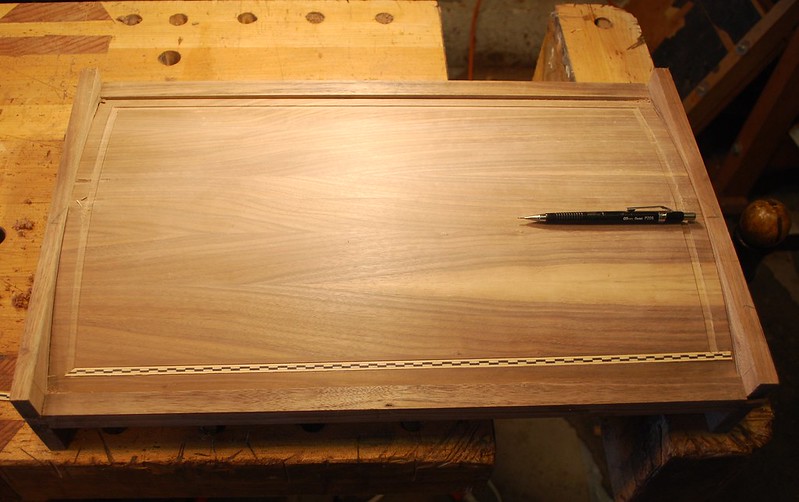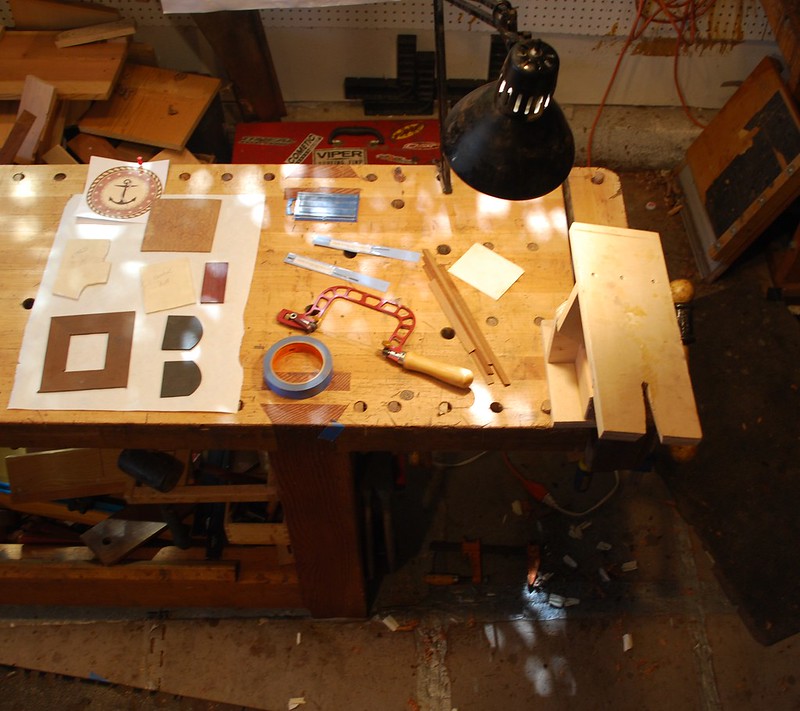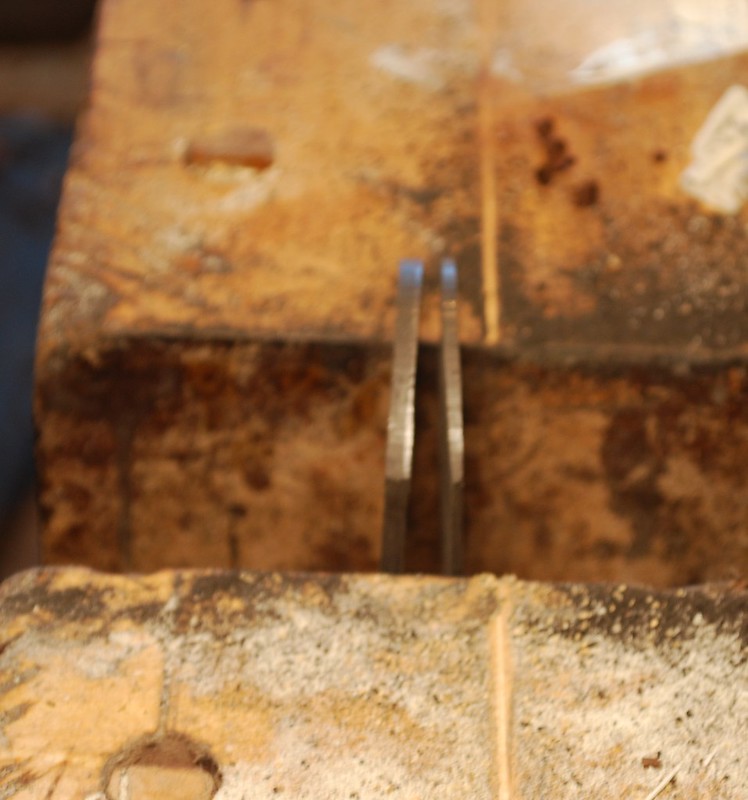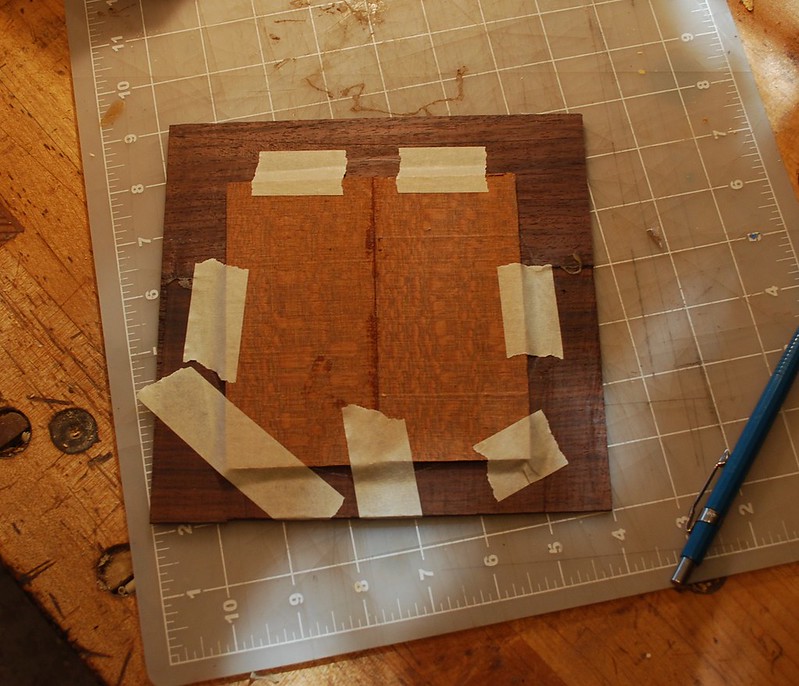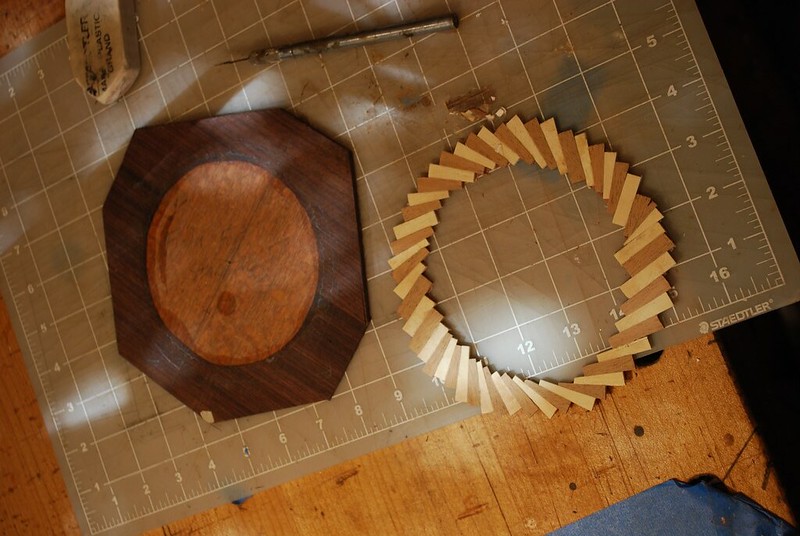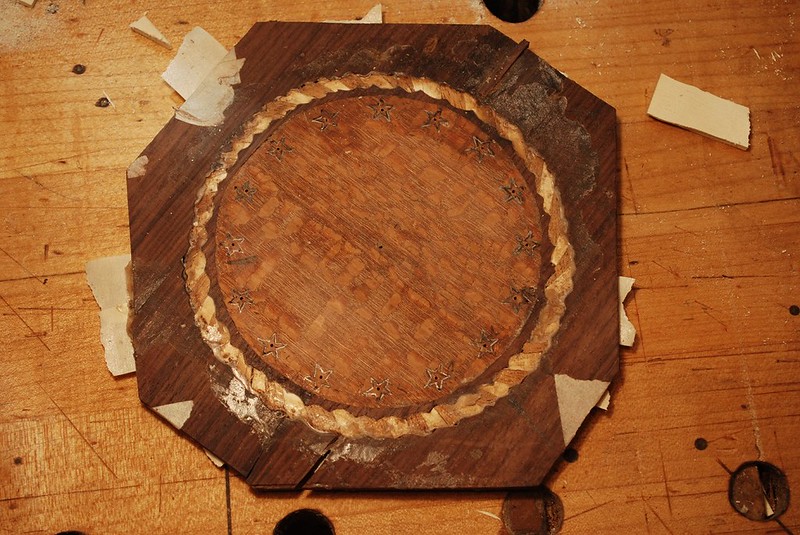This is a build of a small walnut chest 21” long x 14” high x 14” wide, with a coopered convex curved top. My band saw motor stopped working (I think it’s the capacitor?), so this is 100% Neander build. I wasn’t planning on posting so my apologies for not taking pictures of some the earlier parts of the build.
I have some left over walnut from a previous project and decided to build this chest to use up the scraps. I’ve built this design a couple times before in larger sizes. The carcass construction is sort of complicated (more on that later), and so I’m hoping the repetition will help me improve the execution this time around.
I start with the curved chest top because final dimensions are always different than the plan. Once it’s assembled it’s easier for me to build the rest of the carcass to fit the chest top.
I like including curves to my work but I’m terrible at executing them – they always take more time and effort with a higher probability of train wreck results. However when they work out I think they look kind of cool. I don’t know how to do curved laminations so to make the convex lid I used 1 ½”h Wide x 1” thick staves. Even though the chest is small, used 1 inch thick stock for the top because my experience is planing the top and bottom surface of the lid into a smooth, fair curve removes more stock than I usually anticipate.
First step is to make a template for the curve (this is an 18” radius) and build a jig for both the convex and concave curves to hold the top during glue up and shaping. I tried to glue up curved panels like this without the jig and it never works out – impossible to get clamping pressure without pieces flying everywhere. I put spaces on the bottom of the jig so that you can get clamps to hold the staves against the curved template during glue up.
1 by Mike Allen, on Flickr
I beveled the edges of the staves at approximately 5° with the jointer plane. This is just a rough approximation because the final matching bevel angles for adjacent staves are planed by eye once you have them sitting on the jig and can see how they fit.
Here’s some pictures of the glue up and initials shaping of the top and bottom surfaces of lid. For the concave underside of the lid the biggest round molding plane you have is super helpful, however lots of the shaping work is done with a gooseneck (curved) card scraper and sandpaper.
4 by Mike Allen, on Flickr
2 by Mike Allen, on Flickr
3 by Mike Allen, on Flickr
Once the lid is surface, I use a marking gauge and paring chisel to establish a quarter-inch Tennon on all 4 edges that will capture the lid that sort of a “curved panel” in the dovetailed, surrounding frame. Once the rabbit is established, use a rabbit plane to all golf most of the waste. For the curved edges I also establish a small rabbit on the underside of the lid. Because the lid is not uniform thickness and goodness knows the curves probably not uniform either, I would use the panel to Mark out the corresponding curved groove in the frame. Because it’s hard for me to get this groove to precisely match the curved edges of the lid, the rabbits on top and bottom help cover up a poor fit.
5 by Mike Allen, on Flickr
6 by Mike Allen, on Flickr
Here are the curved parts of the frame dry fit to the lid. I was able to re-saw stock with a curving grain pattern that I hope will help fit the look to the construction. I left these pieces overly wide so that I can rip off the bottom portion to use for the corresponding top rail of the carcass and get a nice grain match. The dry fit also helps me layout the curves on the frame so that they terminate at the same height as front/back rails. While shaping the curve, I somehow cracked the PM-11 blade of my spoke shave right at the alignment holes with the depth adjusters. Note to self: next time don’t tighten blade capture screw so much!
7 by Mike Allen, on Flickr
7 by Mike Allen, on Flickr
Front and rear pieces of the frame are dovetailed to the ends. I leave height of the frame slightly proud of the curved panel in hopes of adding some extra strength/protection for the fragile panel
8 by Mike Allen, on Flickr
Here is planing the bottom edges of the chest lid that will make to the carcass flat.
9.5 by Mike Allen, on Flickr




 Reply With Quote
Reply With Quote